Last Words (Letzte Worte). Werner Herzog,1968
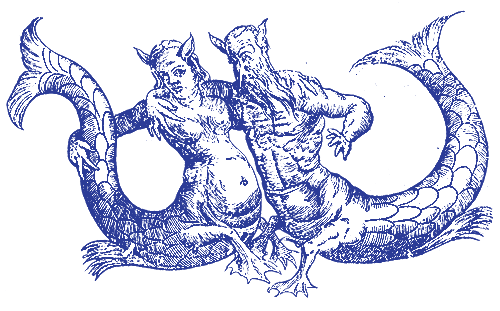
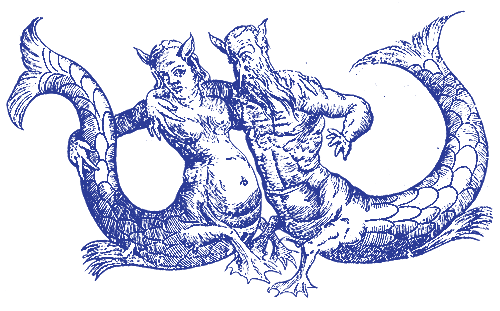
This year’s Walking Club Rietved will be looking into islands as physical entities and as symbolic manifestations of our fluid relations with each other and the world.
How are we to understand islands as seemingly autonomous ‘bodies’ enclaved by bodies of water?
Taping into Greek mythology, travel literature, architecture, maritime poetics (through current artistic projects and critical thoughts), [I]sland [D]rift will investigate islands’ bond with the sea and the mainland and with forces that shape their identity, function and symbolic prospects. Anchoring on those concepts and processes, we are to tap into politics of modern travel juxtaposed against waves of migration, both interlaced with notions of hospitality, fortification, isolation and escapism.
Setting sail on foot, our sessions will examine our fluid proximity to water and the archipelago through literal and metaphorical encounters with canals, creeks and waves, lighthouses, ports, tourists, sirens, mermaids, asylum seekers and ghosts from the sea.
Drawing further inspiration from nautical flags as a code of communication between ships, we are to prospectively develop our own visual language of signalling.
NOV
WED 3rd : 17:00 – 19:00
WED 24th : 17:00 – 19:00
JAN
WED 12th: 17:00 – 21:00
FEB
WED 9th : 17:00 – 21:00
MARCH
WED 9th : 17:00 – 19:00
KΛΕΙΣΑΜΕ (ENCLOSED) ~ A film by Sol Prado (2018)
The film tells a story of the last man to leave the abandoned island of Spinalonga, which had been used as a leper colony. The man refused to leave, and so was forcibly removed. He now lives in Crete, where he plays the lyre at nights in a bar, and refuses to speak. The film's narrative style is very unconventional, with most characters speaking their lines several times repeatedly in long takes. The man from the island has the most spoken lines of any character, as he repeatedly explains that he refuses to speak, even a single word.
Rare historical document from Crete of 1935 with scenes from the Lepers colony of Spinalonga.
László Moholy-Nagy, ARCHITECTS' CONGRESS (CIAM IV), 1933
The passenger ship Patris II transported the participants of the 4th International Congresses of Modern Architecture (CIAM) from Marseilles to Athens and back. Bauhaus teacher Moholy-Nagy, travelling as a “friend of the new building movement” produced this half-hour soundless film as a travel journal. Under the illuminated Acropolis, the opening of the exhibition The Functional City took place in the Technical University. On the return trip, the working sessions were held with lectures and discussions of city analysis prepared by groups from diverse countries.
Forensic Architecture: Shipwreck - Lesbos - Aegean Sea
ΚΛΕΙΣΑΜΕ (enclosed, in Greek) is a short film that takes part part of the director's investigation focused on the case of the island of Leros, Greece. Occupied by the Italians between the first and second World War, the island was then a prison for political prisoners during the Civil War and the Greek dictatorship, a psychiatric hospital since the seventies, and currently is a refugee camp, as well as a tourist destination. This condensation demonstrates a historical sequence that connects by juxtaposition architecture and body, pharmacology power and the construction of a disciplined subjects. The origin of the project is found in the diary that Félix Guattari wrote during his stay on the island in 1989 and in which he denounced the conditions of hospitalization of psychiatric patients. A demonstration, he said, of how European society treated the mentally ill. This project formulates a study, which mixes theoretical references with videogames techniques, applications to calm the anxiety and distress and videos of ASMR (Autonomous meridian sensory response), a typology of distributed online contents that stimulates emotional dependence when creating audiovisual stimuli.
This short film investigates how desire s production is a new way of social regulation, which uses images (among other stimuli) to achieve controlled sedation, subject to the mirages of happiness which are related directly to the merchandized consumption of experiences.
Future Feminism - Anonhi (2012)
And then, what about the fact that we're made of 70% water? And then the whole ocean reacts to the full moon, right? In a serious way. Everything's ticking around that moon and if we're 70% water I must be having some — at least homeopathic — relationship with the changing cycles of the moon...
...I'm worried that the ecology of the world is collapsing and that I won't have anywhere to be reborn because I actually believe, like, where is any of us going? Where have any of us ever gone? We've come back here in some form. Did you know that whales were once land roaming mammals? And then they crawled back into the ocean trying to find something to eat? And then eventually they got rid of their hands and legs.
I've been searching and searching for that little bit of my constitution that isn't of this place and I still haven't found it. Every atom of me, every element of me seems to resonate, seems to reflect the great world around me. So, I've come to the conclusion that this is God's best idea — that this manifest world is the frontier of his dream, or her dream in my opinion. So, that's just my point of view from where I can start to establish a new way to value the world that I'm a part of. Cause if I'm not heading off to paradise elsewhere when I die then I have more of a vested interest in observing a sustainable relationship with this place.
"It's a very indigenous idea that the Earth is a female, that the Earth menstruates, that the water of the world is the blood of a woman's body and that's what we crawled out of just in the same way that we crawled out of our mother's wombs. It's the most basic idea; any child could come up with it and it's so obvious. And yet we've been straining for these Sky Gods for a couple thousand years now....
...And I'm very interested in the feminization of the deities. I'm very interested in Jesus as a girl. I'm extremely interested in Allah as a woman...
...But nonetheless, Allah as a woman is a critical threshold and Buddha as a mother is another one because I truly believe that unless we move into feminine systems of governance we don't have a chance on this planet.
As they were drifting away, their bodies turned into waves ~ Eva Papamargariti (2021)
Little Island is a short documentary about the story of a man who chose to abandon all other life and for almost 40 years live on a small greek island (Chrissi) in the south of Crete. Through the years, he became one with the environment and managed to survive despite the many difficulties. When his stay on the island is disturbed by the tenacity of the forestry commission he is still not willing to leave the island. A person’s destiny always lies in his worst fears. And unlike all our worst fears a strong will hidden behind a life makes it always a worthwhile story to tell.
Little Island, Angelos Psomopoulos (2015)
Leros' new migrant detention centre brings back old, ugly memories
Source: euronews.com, article by Elena Kaniadakis (21.05.2021)
Nautical Flags
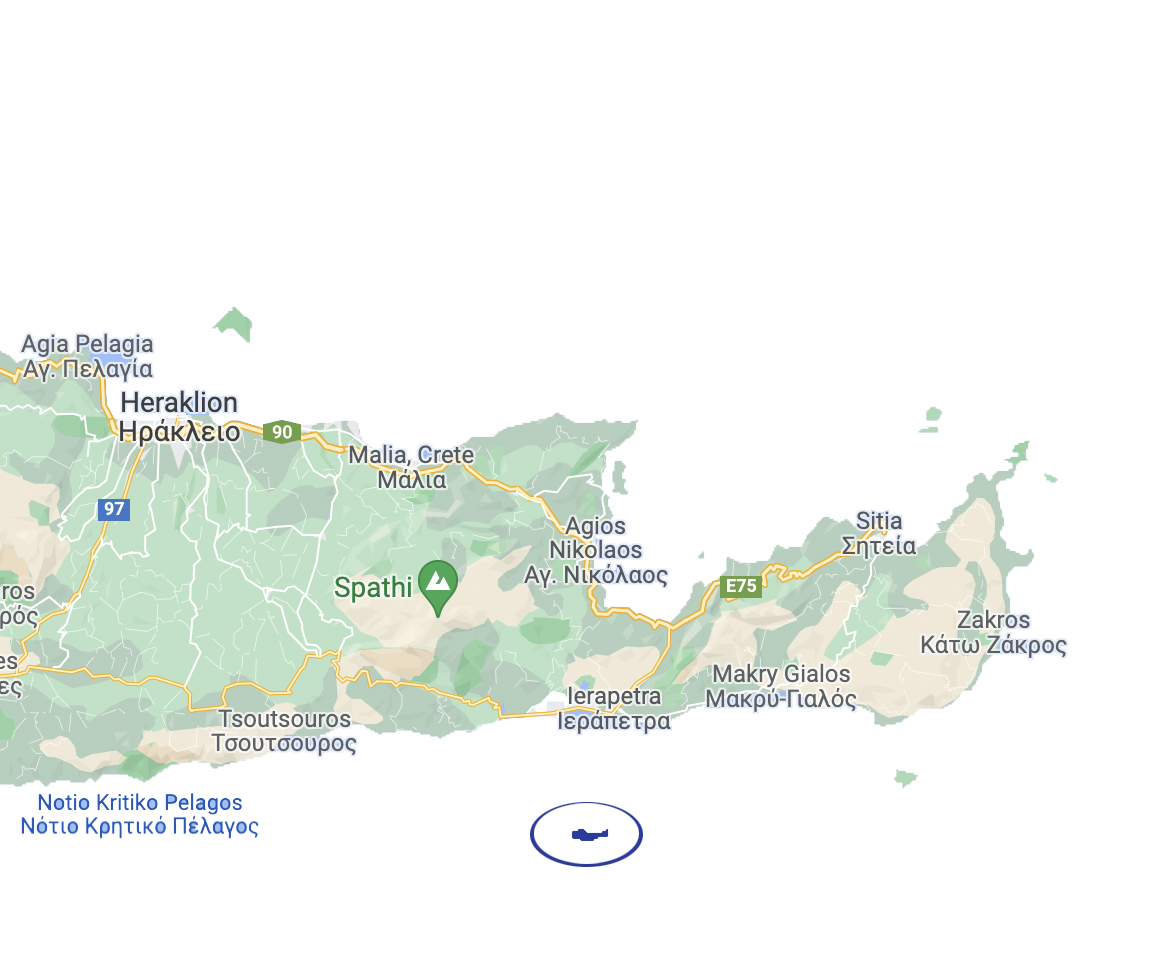
Chrysi or Chrisi (Greek: Χρυσή, romanized: Chrysí, lit. 'golden'; also known as Gaidouronisi, Greek: Γαϊδουρονήσι, romanized: Gaïdouronísi, lit. 'donkey island') is an uninhabited Greek island approximately 15 kilometres (9 miles) south of Crete.
Chrissi is protected as an "area of intense natural beauty". The island has the largest naturally formed Juniperus macrocarpa forest in Europe. There is no fresh drinking water on the island. The majority of trees have an average age of 200 years and average height of up to 7 metres (23 feet), some of the trees are up to 300 years old and 10 metres (33 feet) tall.
It is possible to visit Chrissi by sea from Ierapetra and from Myrtos. There is a nudist beach on the north coast of the island. The highest point on the island is called Kefala ("head") and it is 31 metres (102 feet) above sea level. On the western part of the island is the chapel of Saint Nicholas (estimated to date to the 13th century). There are also a salt pan, an old port, some Minoan ruins, a lighthouse and a Roman cemetery.
KΛΕΙΣΑΜΕ (PDF): Including 'Don't Panic' by Franco Bifo Berardi + interview with the fimlaker
Bjork on 'Oceania'
Island mentality
is the notion of isolated communities perceiving themselves as exceptional or superior to the rest of the world. This term does not directly refer to an island or other geographically confined society, but to the cultural, moral, or ideological superiority of a community that lacks social exposure to the outside world. Island mentality can be characterized by narrow-mindedness, ignorance, or outright hostility towards any artifact (concept, ideology, lifestyle choice, art form, etc.) originating from outside the geographic area inhabited by the society.
The term "island mentality" is also used in some psychological research[which?] to describe individuals who dislike or have problems with relating to others, and then live as loners or "islands". This concept (in which people may feel inferior, afraid, or alone) is unrelated to the above terminology.
CLICK ON THE POSTER TO ACCESS TO FILM
& ON THE PDF ICON TO DOWNLOAD THE ARTICLE
CLICK ON THE TITLE TO ACCESS THE ARTICLE
wikipedia resource
Jan Ijäs - WASTE no.4 TWO ISLANDS (2013)
Two Islands is a film about two enormous waste dumps in Staten Island and Hart Island, NYC. One is a now closed landfill, which at one point was the largest in the world, the other is a cemetary of unidentified people, still in use. Two Islands bluntly asks: what does the existence of these two huge mountains of economic and social waste tell about our civilization, and what kind of legacy will the archaeologists see in them when they are studying these a few centuries from now?
CLICK ON THE IMAGE TO WATCH THE FILM
CLICK ON THE TABLE TO ACCESS THE STUDY CASE
…The fourth Congrès Internationaux d’Architecture Moderne (CIAM, International Congress of Modern Architecture), under the title The Functional City, took place from 29th July to 31st August 1933 on board the Patris II ship that departed on a return trip from Marseille to Piraeus. The international architects and artists on board had the chance to visit the Greek antiquities in Athens and some surrounding islands such as Aegina, Serifos, Ios, and Santorini. The stone-built houses and villages on the islands seemed to embody an intergenerational popular knowledge of Greece. They were shaped by local idioms and traditions, and domestic maritime exchanges of building materials, technologies, and methods. In the eyes of the international architectural elite, the anonymous Cycladic architecture bore the basic elements of Modernist architecture: simplicity, functionality, and scale.
…the fourth CIAM acquired a symbolic signif- icance through its palindromic movement between industrial Marseille and classical Athens, consid- ered to be the cradle of civilization and the origin of the polis. Within this transit, the vernacular Cycladic house acquired its special symbolic position among other, similar settlements in the wider Medi- terranean region due to its location on the land where the Cycladic civilization had bloomed centuries ago. The particular characteristics and forms of Cycladic sculpture and architecture, dissolving in the light of the Greek landscape, were perceived as archetypal and acquired a metaphysical aura.
…The paradoxical relationship of Modernism with the ‘pre-modern’ in the Aegean can be traced through another ideological device: white color. In L’Art Décoratif d’Aujourd’hui (The Decorative Art of Today), Le Corbusier, in defence of simplicity, argued that civilizations who did not use external decorations were superior to those who did. In the essay, Le Corbusier notes the following observa- tion: “during my trips, I found white lime-wash everywhere where the 20th century had not yet arrived.” In fact, most houses on the Cycladic islands were made of stone and clay and retained their stone walls unpainted, or were painted in colors found in nature and made from oxidised iron and other natural resources: ochre, red, indigo and grey. The bare stone and the natural colors camou- flaged the settlements against the frequent pirate attacks in the 18th century. On the contrary, lime- wash was an expensive material and mostly used for aesthetic and practical reasons in rich houses and mansions located in the islands’ capitals, Choras. As well as being an indication of wealth, lime wash and marble dust were used for extra stability and sustainability against humidity. In less expensive houses and households, since the rule of Capodistrias in the 1830s, limewash was used for sanitary reasons as a disinfectant, on the occasion of pandemic outbreaks, and was applied perimetrically around streets and settlements and house entrances. Occasionally, there were decrees for total sanitary white-washing. It is said that during the dictatorship of Ioannis Metaxas, a piece of 1938 legislation obliged all islanders to white-wash their houses due to an outbreak of cholera. At the time of the first visits of European Modernists to the Cyclades, there were lime-washed houses—sometimes whole villages consisting of them—sporadically located among multicolored houses. Despite this, the focus of the travelers was placed on white. The motif of the white house standing out amongst the wilderness and bathed in light is a predominant feature in most modern artistic representations of the Cyclades.
….The discordance of interests of visitors, residents, artists, architects, and the state created a vicious circle, a mise en abyme that proliferated the whiteness of the Cycladic settlements. Islanders, under- standing the deriving symbolic value of this situa- tion and speculating on its financial potential, participated in the lime-washing of houses and villages. This took place as a result of both personal initiative and national policy.
One of the most decisive moments was the obligatory whitening ordered by the military junta in 1972. According to the decree, “among other restrictions on construction, it is forbidden to apply many hues on the house façades, and it has been decided that the dominating color of houses should be white which is a particular characteristic of the Cyclades islands and generally a subconscious duty of all inhabitants to achieve full uniformity in harmony with the peculiar color of Cyclades islands”. White was instrumentalized to serve the totalitarian ideology of homogeneity, expressed by white houses with blue doors and windows. On one hand, this was a reference to the colors of the Greek flag, resonating nationalist feelings and symbolizing the Greek nature—blue for the sea and white for the seafoam. On the other hand, this was part of the construction of a national brand according to the regime’s aesthetics and used for tourism purposes.
…The Modernist exaltation of the white ver- nacular house dissolved in its tourism representations. The tourist request for assimilation into local, ‘authentic’ life, was architecturally translated as an urge for the reproduction of the ‘traditional’ white houses. The metaphysical property of the Cycladic house was transmitted from the ‘archetypal’ to the ‘traditional’. Critics of white-washing argued that this dry reproduction lacked any inspiration, thought, and innovation, stripped the Cycladic house of its primal character and treated architecture as scenography, serving the tourism branding of the region and transforming the islands into theme parks.
Traveling to the Cyclades: Modernist Projections
Dimitra Kondylatou
The Architect is Absent - Approaching the Cycladic Holiday House (Kyklàda Press, 2020)
(abstract)
...Mary Douglas offered a structural analysis of ‘purity and pollution’, by taking into account a wider range of social systems and chronologies with different logics and symbolic interpretations. She wrote: “If we can abstract pathogenicity and hygiene from our notion of dirt, we are left with the old definition of dirt as matter out of place.” (Douglas, 1980). By this, she suggested that dirt is always inherently bound to a social system. “Dirt is the by-product of a systematic ordering and classification of matter, in so far as ordering involves rejecting inappropriate elements. This idea of dirt takes us straight into the field of symbolism and promises a link-up with more obviously symbolic systems of purity.” (Douglas, 1980).
John Howard was an early English prison reformer. His work focused on the enhancement of the physical and mental health of the prisoners, including the administration of security and order. Departing from that aspect, he observed many similarities between the living conditions in prison and in lazarettos, during his Grand Tour journey in 1748. In An account of the Principal Lazarettos in Europa (1791) his proposal for a new plan for lazarettos resembled his recommendations for the prison enhancement, aiming at a better life quality for the inmates and better rules for maintaining the health standards. In his words “Many lazarettos are closed, and have too much the aspect of prisons; and I have often heard captains in the Levant trade say that the spirits of their passengers sink at the prospect of being confined in them. In those of them which I have visited, I have observed several pale and dejected persons, and many fresh graves.” (Howard, 1791).
Howard's writings suggested that the sick or suspect body was excluded from the ‘healthy’ society, rather than properly treated and taken care of. Lazarettos were liminal spaces located between a town and the rest of the world, between health and sickness, between life and death. The liminality of these spaces is apparent in their location and architecture.
Most lazarettos were strategically located far enough, not to threaten the city's safety, but close enough to remain under administrative control. Lazarettos were designed with strict boundaries that secured their total isolation from the rest of society.
…Many lazarettos followed the logic of the fortress architecture, especially those built on remote islands across the ports and the cities. Precisely the lazaretto of Aegina (36 km or 23 mi from Athens) was built in a unique amphitheatrical arrangement reminiscent of Jeremy Bentham’s conception of the Panopticon in the 18th century. Bentham gave shape to a ubiquitous system of prison surveillance, offering ultimate power to the guards based on visibility. Prisoners were being seen but could not see. Incarcerated in their cells, all looking towards the central tower —as the building was cylindrical—they were exposed to the guard and hidden from the rest of the inmates. Invisibility guarantees order and visibility guarantees discipline, or rather self-discipline. Surveillance was, therefore, the main system put in practice by the architectural and spatial apparatus that constantly inscribed in the exposed bodies a non-personal and non-physical power relation.
…Precisely because of their size and structure, many lazarettos were, in the years that followed, hosting refugees, or were turned into prisons, mental asylums and concentration camps.
…From the 14th until the 19th century, quarantine was often inherent to traveling. Sailors, traders, scientists, doctors, artists, archaeologists, pilgrims, escapists, opportunists, vagabonds, criminals, and ‘tourists’ of the time, all kinds of maritime travelers and a multitude of different people were kept in quarantine inside the lazarettos to undergo health control before entering new territories…However, the most frequent travels were the commercial ones; especially with the spread of colonization, the movement of people and goods was happening at a larger scale. Since the steam engine and the railway development were still in their early stages, transportation was mainly taking place by the sea.
The relationship between health and financial management and the interference of the European powers in the Eastern Mediterranean can be well understood in the development of the sanitary system in Greece. More precisely, in the example of the lazaretto at Syros. After its independence from the Ottoman Empire, the newly formed Greek state made a decisive turn to the West. The Aegean ports became the first European stations for ships com- ing from Asia and Africa. Understanding the importance of its strategic location, Greece, under the European influence, gradually organized its sanitary system to protect its borders—and consequently, the European borders—from highly contagious diseases carried along with maritime commerce.
…The 1845 Sanitary Code in Greece set several categorizations according to the places of origin of humans, animals and merchandise, which would define each vessel’s sanitary treatment reaching a port. Fundamental was the distinction of places between sanitary immune and non-sanitary im- mune, which in their turn were divided into clean, suspect and unclean. Those coming from non-sa- nitary immune places had to undergo the cleansing process. The confinement duration and the cleansing period were defined by the authorities and depended on the estimation of the danger for public health. In general, an average duration before 1845 was about 7 days for humans and 15 for mer- chandise. The 1845 Sanitary Code defined the con- finement and cleansing time more precisely. The contaminated merchandise could remain in the lazarettos for up to 4 weeks, in order to be fully disinfected.
…During the first years of the function of lazaretto at Syros, the confined passengers, inspected by the guards, had to wash their clothes and possessions, by dipping them inside the sea for 3 hours. They had to repeat the process 2 or 3 times per day. Precious or sensitive objects and clothes were aired inside the confinement huts during the daytime and in plain air during the night. Merchandise and personal possessions were purified by constant airing, turning, and fumigation. Certain items, though, such as cotton, straw, feathers, and, above all, paper, were considered important sources of infection that needed tenacious and more special treatment.
…Letters, books, and artists’ sketches were aired and fumigated with camel manure or herbal mix and sulfur flower. Official mail and coins were disinfected using vinegar.
…Many travelers experienced their stay in lazarettos as a compulsory and unpleasant inter- ruption in their professional or leisure trip, as “imprisonment with the chance of catching the Plague” and “a serious drawback to the pleasures of an Eastern tour.”
…Travel goes hand in hand with financial and industrial development. Therefore citizens from industrially advanced countries that had an advan- tage in mobility, cultural and scientific trips, and communication were the most frequent travelers. Many of the written testimonies saved during the 19th century from the lazaretto of Syros were by English travelers, whose mail demonstrates their privilege over the other inmates and represents only part of the life in the lazaretto. Class distinctions were applied. In the new lazaretto at Syros, the wealthier passengers enjoyed better conditions, as they could pay for having better quality furniture, food orders, and amenities during their stay, as they were accommodated in separate, more luxurious, and spacious rooms.
…Most lazarettos remained open and functional until the mid19th century. The technological progress in medicine and commerce, which included the development of chemical disinfection methods, of hospital construction, and the spread of steam power, eventually led many lazarettos to close down. This was a slow and long process. Some of them continued to function or were recruited, even in the 20th century, in case of emergency and others were used for other purposes, often connected to confinement and discipline.
Confined Spaces
Dimitra Kondylatou
(abstract)
Public Health in Crisis - Confined in the Aegean Archipelago (Kyklàda Press, 2020)
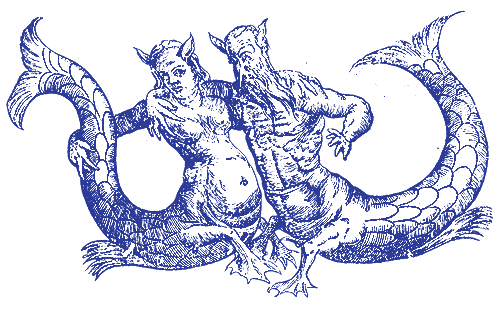
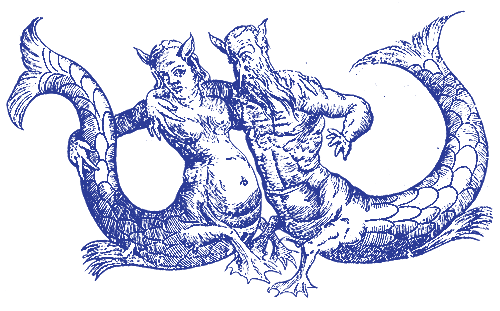
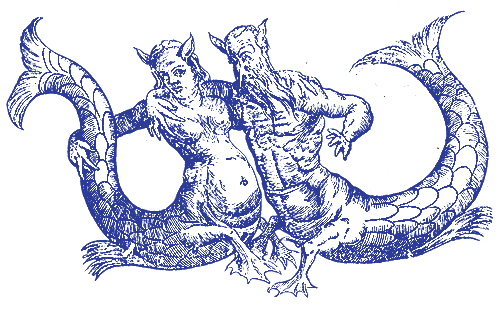
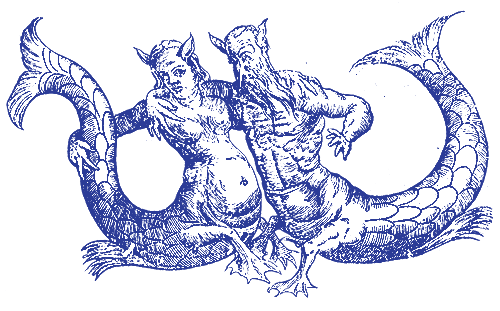
Imia (Greek: Ίμια) is a pair of small uninhabited islets in the Aegean Sea, situated between the Greek island chain of the Dodecanese and the southwestern mainland coast of Turkey. They are known in Turkey as Kardak.
Imia was the object of a military crisis and subsequent dispute over sovereignty between Greece and Turkey in 1996.
The dispute over Imia arose when, on 26 December 1995, the Turkish cargo ship Figen Akat accidentally ran aground on the east islet and had to be salvaged. A Greek tugboat responded to the distress call. The Turkish captain initially refused the assistance offered, maintaining that he was within Turkish territorial waters.
On 27 December, the Turkish Foreign Ministry notified the Greek authorities that it believed there was a sovereignty issue, and on 29 December it declared the islets Turkish territory. On January 9, Athens rejected the claim, citing the Treaty of Lausanne (1923), the Convention between Italy and Turkey (1932) and the Treaty of Paris (1947).
The whole event was barely reported in the media so it was not widely known to public until a month later, on 20 January 1996 when the Greek magazine GRAMMA ran a story, one day after Kostas Simitis was appointed to form a new Greek government as prime minister. The article brought a severe reaction from the Greek press, which was followed by four citizens of the neighbouring island of Kalymnos, including the mayor and the owner of a herd of sheep that remained on the islets, hoisting a Greek flag on the east islet on 25 January.
To oppose this, on 27 January some Turkish journalists from Hurriyet landed on the islet with a helicopter, lowered the Greek flag and hoisted a Turkish flag, the whole event being broadcast live on Turkish television.
On 28 January, the Greek Navy lowered the Turkish flag and restored the Greek, resulting in an exchange of fierce statements by the Turkish prime minister Tansu Çiller and the new Greek prime minister Kostas Simitis. Turkish and Greek naval forces were alerted and warships of both countries, both NATO members, sailed to the islets.
During the crisis, in the night of 28 January, Greek special forces landed secretly on the east islet undetected. On 31 January at 1:40 am Turkish special forces SAT Commandos also landed undetected on the west islet escalating the tensions. It was not until 4 hours later when the Greeks noticed this when a Greek helicopter took off at 5:30 am from the Greek frigate Navarino for reconnaissance. During the mission it crashed over the islets (some speculating due to Turkish fire), but this was concealed by both states[16] to prevent further escalation, although three Greek officers on the helicopter were killed.
The immediate military threat was defused primarily by American officials. The Greeks and Turks did not speak directly to one another, but were responsive to Washington's assistance as an informal intermediary. Agreement was given by both sides to the United States to return to the "status quo ante"—i.e., differing views on sovereignty and no military forces on the islets. While US engagement was instrumental in defusing the crisis, the fundamental territorial issue has remained unresolved since that time.
In the aftermath of the Imia crisis, the dispute was also widened, as Turkey began to lay parallel claims to a larger number of other islets in the Aegean. These islands, some of them inhabited, are regarded as indisputably Greek by Greece but as grey zones of undetermined sovereignty by Turkey.
The crucial point of reference for the assessment of the legal status of the islets, acknowledged as such by both sides, is the Peace Treaty of Lausanne of 1923. With this peace treaty, Turkey confirmed large cessions of former Ottoman territory to Greece and Italy which had been de facto under their control since 1911 or 1913. The chain of the Dodecanese islands, which includes the islands neighbouring Imia, were ceded to Italy. Later the rights to these islands were ceded by Italy to Greece with the 1947 Treaty of Paris. However, the Treaty of Lausanne does not mention every single small island by name, but treats them summarily.
Imia Military Crisis - disputed islets
CLICK ON THE IMAGES TO ACCESS THE WIKIPEDIA ARTICLE
Hydrofeminism: Or, On Becoming a Body of Water
Astrida Neimanis
Undutiful Daughters: Mobilizing Future Concepts, Bodies and Subjectivities in Feminist Thought and Practice,
eds. Henriette Gunkel, Chrysanthi Nigianni and Fanny Söderbäck.
New York: Palgrave Macmillan, 2012.
We are all bodies of water.
To think embodiment as watery belies the understanding of bodies that we have inherited from the dominant Western metaphysical tradition. As watery, we experience ourselves less as isolated entities, and more as oceanic eddies: I am a singular, dynamic whorl dissolving in a complex, fluid circulation. The space between our selves and our others is at once as distant as the primeval sea, yet also closer than our own skin—the traces of those same oceanic beginnings still cycling through us, pausing as this bodily thing we call “mine.” Water is between bodies, but of bodies, before us and beyond us, yet also very presently this body, too. Deictics falter. Our comfortable categories of thought begin to erode. Water entangles our bodies in relations of gift, debt, theft, complicity, differentiation, relation.
What might becoming a body of water—ebbing, fluvial, dripping, coursing, traversing time and space, pooling as both matter and meaning—give to feminism, its theories, and its practices?
.... Despite the fact that we are all watery bodies, leaking into and sponging off of one another, we resist total dissolution, material annihilation. Or more aptly, we postpone it: ashes to ashes, water to water.
At what point is the past overtaken by the present? What marks the definitive shift from one species to a “new” one? Where does the host body end and the amniotic body begin? Our bodies are thresholds of both past and future. The precise material space-time of differentiation is only a matter of convenience, but any body still requires membranes to keep from being swept out to sea altogether.
There is always a risk of flooding.
CLICK ON THE PDF ICON TO DOWNLOAD THE ESSAY
AQUAPHOBIA, 2017 - Jakob Kudsk Steensen
CLICK ON THE IMAGE TO ACCESS THE MUSIC VIDEO
AQUAPHOBIA uses VR to connect inner psychological landscapes with exterior eco-systems. The work is inspired by psychological studies of the treatment of aqua phobia – fear of water- as an entry point to transform perceptions of our relationship to future water levels and climates. You follow a water microbe guiding you through five stages of a breakup story, mixed with references to five steps patients treated for fear of water go through, and five parts of a virtual replica of Louis Valentino Jr. Park and Pier in Redhook, Brooklyn, from subterranean mud tunnels to a bridge extending over future rising waters.
The virtual landscape combines red-clay materials with pre-urban plant species in Brooklyn and futuristic settings. The virtual landscape is developed from satellite images and soil and rock types Jakob Kudsk Steensen collected and photographed in his studio, later to be used as digital textures in the virtual world of AQUAPHOBIA. While journeying through the landscape, mud, water, subterranean infrastructures, roots and plants intertwine with one another to form a symbiotic landscape the person visiting the virtual simulation of AQUAPHOBIA experiences.
While travelling through the landscape, an alien morphing aquatic entity follows you around and emit scuba diving sounds and recites a poem, which tell a breakup story between the landscape and its virtual visitor. Ultimately, AQUAPHOBIA uses VR to mixes past and future geological periods, and the work personifies a landscape through a break-up story.
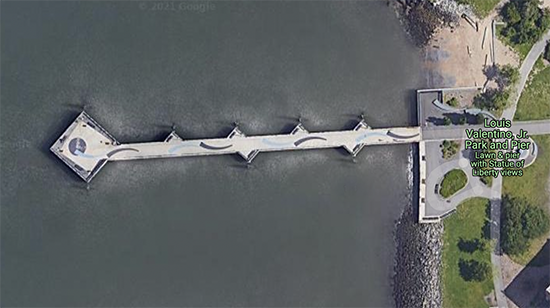
Louis Valentino Jr. Park and Pier
Redhook, Brooklyn
On 28 October 2015, a migrant boat left the coast of Western Turkey heading to the closest European coast—the Greek island of Lesvos. The sea was rough, and the boat was old and overcrowded with more than 300 passengers. It sank 280m beyond the maritime border into Greece, in EU territorial waters, resulting in the death of at least 43 people. It was the deadliest incident in a period known as the ‘long summer of migration’, when over a million refugees and migrants attempted to reach EU shores by sea.
The incident was widely reported in international media. That reporting credited Frontex, the EU’s border agency, and the Greek coastguard, as having carried out of a successful and competent rescue operation. Our analysis disputes this, however, and opens up possibilities for civil society groups to call for accountability for lives lost in the Mediterranean.
One of the survivors, the artist Amel Alzakout recorded the journey and the shipwreck on a waterproof camera attached to her wrist. This footage provides a unique situated perspective of this tragic event at the threshold of Europe.
CLICK ON THE VIDEO - SETTINGS - SUBTITLES - AUTO-TRANSLATE AND SELECT ENGLISH
Fire At Sea (2016) - Gianfranco Rosi (TRAILER)
The film was shot on the Sicilian island of Lampedusa during the European migrant crisis, and sets the migrants' dangerous Mediterranean crossing against a background of the ordinary life of the islanders. The main characters are a twelve-year-old boy from a local fishing family and a doctor who treats the migrants on their arrival.
Fire at Sea won the Golden Bear at the 66th Berlin International Film Festival.
Slatwater baits - lures

Among the many myths about the origin of the Aegean Sea is the popular myth that the name is attributed to the King of Athens called Aegeus (Aegeas).
King Minoas was a Crete king. His son Androgeo had been killed by the Athenians. In order to revenge his son’s death, he declared war against Athens and won. Subsequently, the Athenians became his subjects. As tribute to his empire, King Minoas would demand a sacrifice of Athenian boys and girls every night.
During one of those sacrifice times, the King of Athens’ son, Theseus (Theseas), decided it was time to end the pattern of bloody sacrifices. So, he took the place of one of the boys and accompanied those to be sacrificed to Labyrinth. A mythical Minotaur was believed to be responsible for devouring the sacrifices. Theseus determined to kill him.
Enroute to the Labyrinth, Theseus met King Minoas’ daughter called Ariadne. The two fell in love and Ariadne helped Theseus win the war against Minotaur. After killing him, he began a journey back home with Ariadne beside him. However, Theseus abandoned her on the island of Naxos and proceeded back to Athens without her.
Unfortunately, he forgot to hoist the white sails as a sign of victory. SO when the father saw a black sails, instead, he assumed his son was dead. Consequently, he threw himself from the cliff at the Poseidon temple and died. Theseus got home safely and victorious. But, he was met with the sad news of his father’s death. Subsequently, the sea was named after Aegeus, Theseus’ father.
Aegeus seeking Theseus boat at the sea from Posidon's temple.
The Aegean Sea is an elongated portion of the Mediterranean Sea.
It is approximately 611.5 km long with a surface area of 132,931.8 square km.
About 1,400 islands and islets adorn the Aegean Sea.
Dolphins are Back in Venice (2021) - Despina Charitonidi - Westwerk Hamburg (installation detail)
https://www.despinacharitonidi.com/dolphinsarebackinvenice
To drink a glass of water is to ingest the ghosts of bodies that haunt that water.
Hydrofeminism: Or, On Becoming a Body of Water - Astrida Neimanis
If we are all bodies of water, then we are differentiated not so much by the “what” as by the “how.” But what are the specific mechanisms of this differentiation?
Attention to the mechanics of watery embodiment reveals that in order to connect bodies, water must travel across only partially permeable membranes. In an ocular-centric culture, some of these membranes, like our human skin, give the illusion of impermeability.
Still, we perspire, urinate, ingest, ejaculate, menstruate, lactate, breathe, cry. We take in the world, selectively, and send it flooding back out again.
This selection is not a “choice” made by our subjective, human selves; it is rather always, as Nietzsche has taught us, an impersonal expression of phusis’ nuances—affirmative material energies striving toward increasingly differentiated forms.
Hydrofeminism: Or, On Becoming a Body of Water - Astrida Neimanis
In acknowledging this corporeally connected aqueous community, distinctions between human and nonhuman start to blur.
We live in a watery commons, where the human infant drinks the mother, the mother ingests the reservoir, the reservoir is replenished by the storm, the storm absorbs the ocean, the ocean sustains the fish, the fish are consumed by the whale.
The bequeathing of our water to an other is necessary for the custodianship of this commons.
But when and how does gift become theft, and sustainability usurpation?
Hydrofeminism: Or, On Becoming a Body of Water - Astrida Neimanis
Eco: home. Tone: tension.
We must learn to be at home in the quivering tension of the in- between. No other home is available. In-between nature and culture, in-between biology and philosophy, in-between the human and everything we ram ourselves up against, everything we desperately shield ourselves from, everything we throw ourselves into, wrecked and recklessly, watching, amazed, as our skins become thinner.
Hydrofeminism: Or, On Becoming a Body of Water - Astrida Neimanis
Splendid isolation: ‘Philosopher’s islands’ and the reimagination of space
Angus Cameron
CLICK ON THE PDF ICON TO READ THE ESSAY
Angus Cameron (University of Leicester) presents 'Splendid Isolation: Philosophers' islands and the contemporary geo-political imagination' at the 'Hydrarchy' conference held at UCL, London, 18th September, 2010.
Thomas More’s original Utopia presented its educated and politically shrewd target audience (the court of Tudor England in 1516) with a deliberately contradictory idea – a named place that is no-place, somewhere with a carefully contrived history, population, landscape and all the other paraphernalia of a real place, but with no location other than a vague nod towards the then recently discovered ‘new world’. To further confound spatial expectations, this no-place was not, as have been most subsequent island paradises, discovered in the course of some voyage of European exploration but was actively created by its original inhabitants.
The myth of origin for Utopia, recounted in the book by
More’s fictional Portuguese sailor Raphael Hythlodae, has it that it was deliberately carved off from the mainland of Abraxia (another, bigger, non-place) by the digging of a 15 mile wide channel.
This was done at the behest of Utopus, the founder who
lends his name to the island. Both through this carefully constructed and witty ‘distancing’ of a place that does not exist, and through the rhetorical distancing created by the bipartite and, in any case, ‘second hand’ structuring of the narrative itself (More introduces the story in his own voice, but then has his Portuguese mariner deliver the account of Utopia itself), More deliberately plays around with both the authorial viewpoint and the spatial assumptions of his audience. In short, he dislocates everything and everyone.
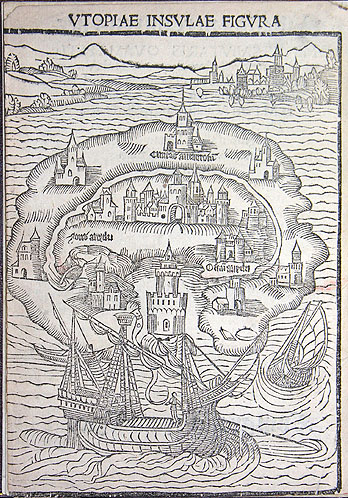
Map of Utopia, 1516
Guantanamo Bay Naval Base , Cuba
Nauru ( Nauru : Naoero ), officially the Republic of Nauru , is an island nation and republic in Micronesia in the Pacific Ocean
Micronesian and Polynesian peoples settled Nauru at least three thousand years ago. There were traditionally 12 clans or tribes. The Nauruan people called their island "Naoero"; the word "Nauru" was later created from "Naoero" for English language speakers. Naurans subsisted on coconut and Pandanus fruit, and caught juvenile milkfish, acclimatized them to fresh water and raised them in Buada Lagoon. Only men were permitted to fish on the reef, and did so from canoes or by using trained man-of-war hawks.
British whaler John Fearn became the first Westerner to visit Nauru in 1798, and named it Pleasant Island. From the 1830s, Nauruans had contact with whaling ships and traders who replenished their supplies at the island. Beachcombers and deserters began to live on the island. The islanders traded food for alcoholic palm wine, known as toddy, and firearms. The firearms were used during the ten-year Nauruan Tribal War that began in 1878 in a dispute at a wedding celebration when a handgun was fired and a young chief was inadvertently killed. The drunken, mindless fighting reduced the population from 1,400 to nine hundred persons.
Germany annexed the island on April 16, 1888, arrested the surviving chiefs, and banned both alcohol and firearms, thus ending the tribal war. The island was incorporated into Germany's Marshall Islands Protectorate, and named Nawodo or Onawero. The war had established kings as rulers, the most widely-known being King Auweyida.
A Catholic missionary and a Congregational minister from the Gilbert Islands arrived in 1888. Those two denominations continue to be popular today.
New Zealand prospector Albert Ellis discovered phosphate there on Nauru in 1900. The Pacific Phosphate Company started to exploit the reserves in 1906 by agreement with Germany, and exported their first shipment in 1907. Following the outbreak of World War I, Australian forces captured the island in 1914. After the war, the League of Nations gave the United Kingdom a trustee mandate over the territory, shared with Australia and New Zealand in 1923. A Nauru Island Agreement, signed in 1919, had created the British Phosphate Commission, which took over the rights to phosphate mining.
During World War II Japan occupied Nauru from August 1942. The Japanese-built airfield on the island was bombed in March 1943, preventing food supplies from reaching the island. The Japanese deported 1,200 Nauruans to work as laborers in the Chuuk islands, where 463 died. Those left on Nauru suffered starvation and bombing by the Americans for two years, before liberation on September 13, 1945, when Japanese forces surrendered to the Australian warship HMAS Diamantina. Nauruans returned from Chuuk on the phosphate ship Trienza in January 1946. By then, the island was a mass of military litter, almost totally lacking in food supplies.
In 1947 a trusteeship was approved by the United Nations, and Australia, New Zealand and the United Kingdom administered the island. Nauru became self-governing in January 1966, and following a two-year constitutional convention, became independent in 1968, led by founding president Hammer DeRoburt. In 1967 the people of Nauru bought the assets of the British Phosphate Commission, and in June 1970, control passed to the locally owned Nauru Phosphate Corporation. Income from the exploitation of phosphate gave Nauruans one of the highest living standards in the Pacific.
In 1989 the country took Australia to the International Court of Justice over Australia's failure to remedy environmental damage caused by phosphate mining. The action led to a sizeable out-of-court settlement to rehabilitate the mined-out areas. Diminishing phosphate reserves led to economic decline, accompanied by increasing political instability; Nauru had 17 changes of administration between 1989 and 2003.
Nauru has its own banking system; the Bank of Nauru is wholly owned and operated by the government. The financial sector grew in importance after the 1980s as the island became known as an offshore banking centre and tax haven. Beginning in 1999, amid allegations that it was a money-laundering conduit for organized crime and terrorist organizations, the financial sector underwent a series of reforms to increase its transparency. As one consequence of its colonial history, Nauru is within the Australian monetary system, and Australian currency is the country’s legal tender.
Since 2001, a significant proportion of the country's income has come in the form of aid from Australia. In 2001 the MV Tampa, a ship which rescued 460 refugees (from various countries including Afghanistan) from a stranded 65 foot (20 meter) boat that was seeking to dock in Australia, was diverted to Nauru, and the refugees housed in a detention center. Nauru continued to operate the detention center in exchange for Australian aid. However, as of November 2005, only two asylum seekers remained on Nauru.
There is an asylum seekers center on Nauru that was closed for some years, but was reopened in 2012. The very expensive center is operated by Australia . Nauru will receive an amount of 1.7 billion from Australia in exchange, which in 2012 resulted in an increase of Nauru's GDP by a factor of 450. Nauru is the country that handles the highest number of asylum procedures for any other country.
There is international criticism of this construction because of the conditions in the center and because it would mean that Australia would shirk its responsibility. This has also led to heated discussions in the Australian Parliament.
In November 2012, an Amnesty International delegation visited the camp and described it as a human rights disaster.
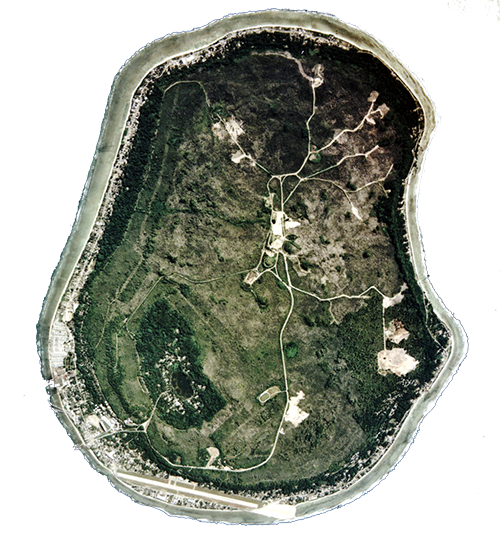
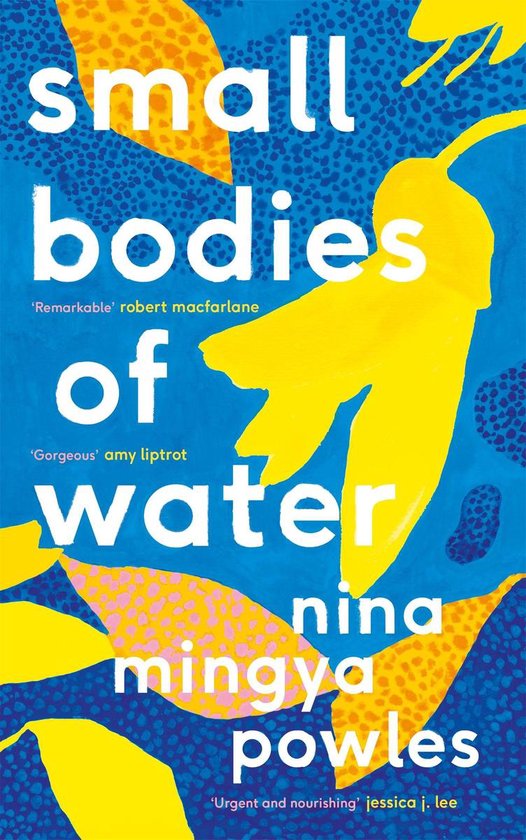
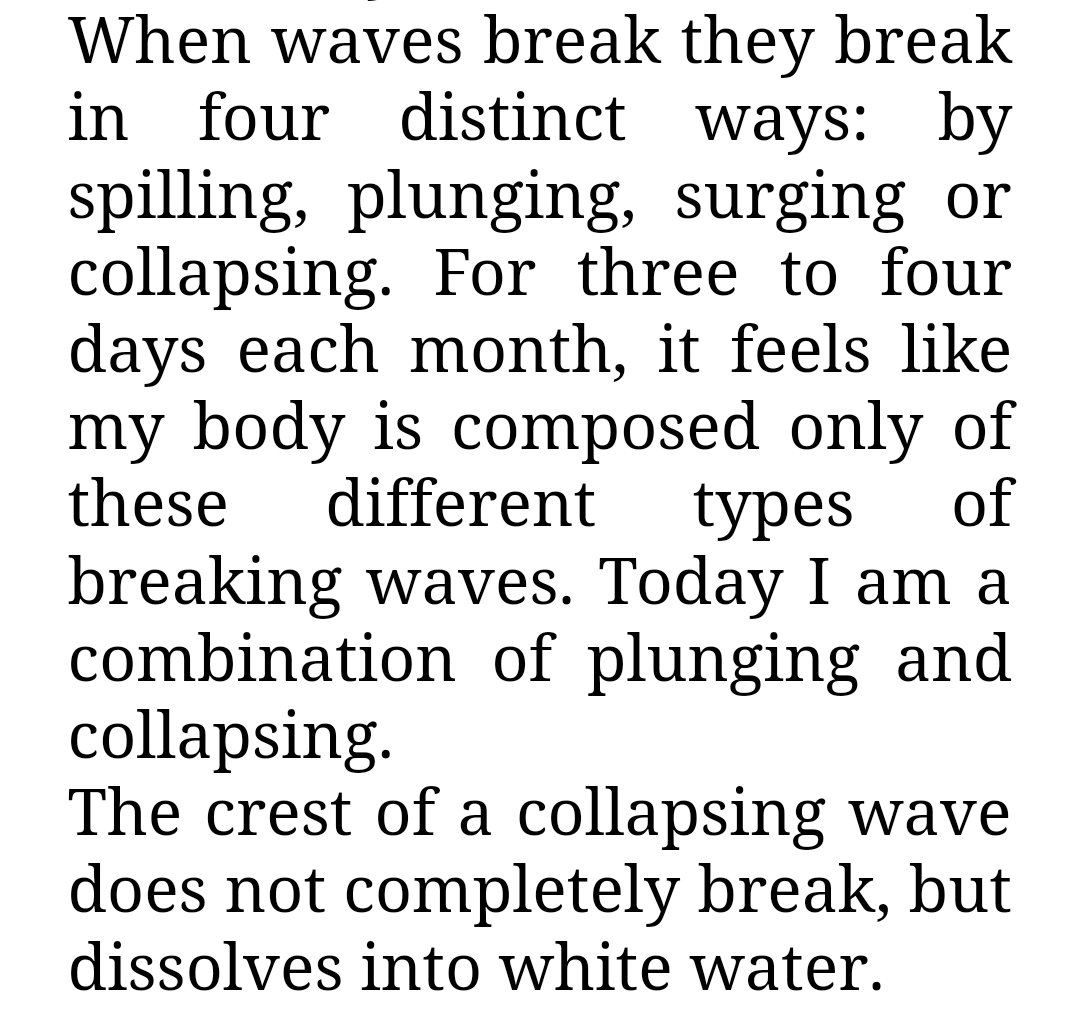
Abstract from CHAPTER IV: The Language of Wave by Nina Mingya Powles - Small bodies of water (Canongate Books Ltd. 2021)
CLICK ON THE PDF TO ACCESS The Language of Waves.
Click on the image to visit
Call Overboard - Offshore Refractions
(the outcome of the study)